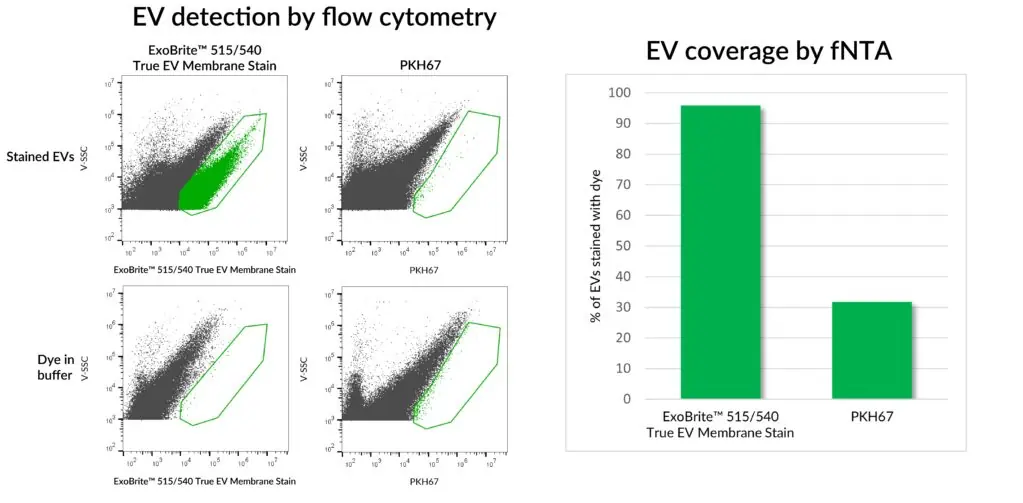Content #1
Content #1
Content #1
Fremont, CA, May 7, 2024: Biotium, a leading supplier and inventor of fluorescent cellular probes for life science research, announces the release of ExoBrite™ True EV Membrane Stains for detection of extracellular vesicles (EVs). ExoBrite™ True EV Membrane Stains are novel membrane dyes designed for clear differentiation of EVs from non-specific particles during flow detection. Fluorescence nanoparticle tracking analysis (fNTA) determined the stains to be a superior choice over PKH with higher (near-complete) pan-EV staining. ExoBrite™ True EV Membrane Stains are offered in two colors for detection in FITC or PE channels, and can be used with antibodies for multi-parameter analysis. The stains are also available in a standard size of 500 labelings, or trial size of 100 labelings. To learn more about ExoBrite™ True EV Membrane Stains, visit the product page.

After realizing an unmet need for reliable probes for EV detection, particularly in flow cytometry, Biotium sought to launch a diverse line of unique reagents aimed at addressing these challenges, beginning with the 2021 release of ExoBrite™ CTB EV Staining Kits (formerly ExoBrite™ EV Membrane Staining Kits). 2022 saw the introduction of the ExoBrite™ Antibody Conjugates (CD9, CD63, and CD81) for flow cytometry and western blotting, followed by ExoBrite™ WGA (wheat germ agglutinin conjugates) and Annexin V EV Surface Stains. An ExoBrite™ EV Surface Stain Sampler Kit that includes samples of ExoBrite™ CTB, WGA, and Annexin V stains is also now available, as well as ExoBrite™ Streptavidin Magnetic Beads that can be combined with biotinylated antibodies for efficient EV capture and isolation.
Biotium is a leading life science reagent manufacturer and supplier devoted to providing high-quality and innovative fluorescent tools that fuel scientific discovery. Our collaborative team of experienced chemists and biologists, who are at the forefront of fluorescent dye design, apply chemistry-based principles toward producing solutions for unmet challenges in life science and medical research. Since its founding in 2001, Biotium has developed over 30 patented technologies that have been licensed out to leading life science technology companies worldwide.